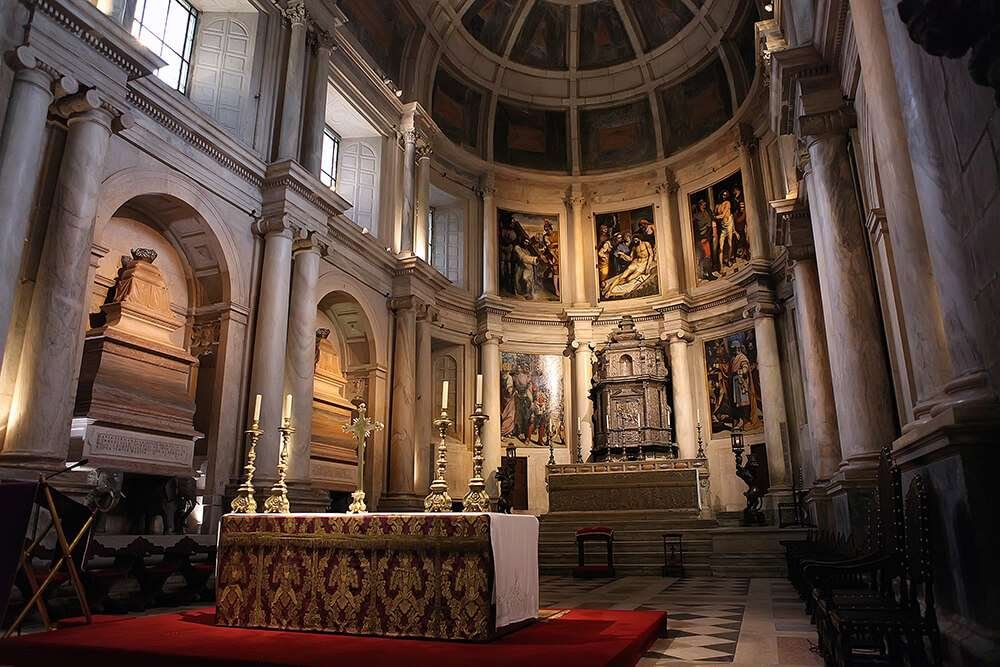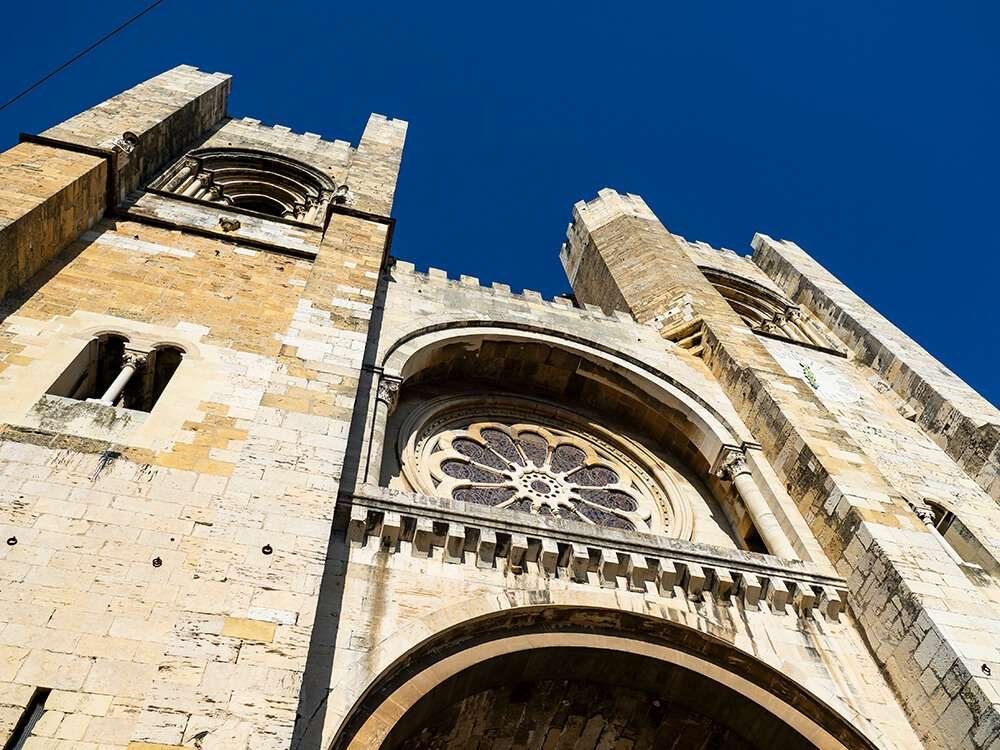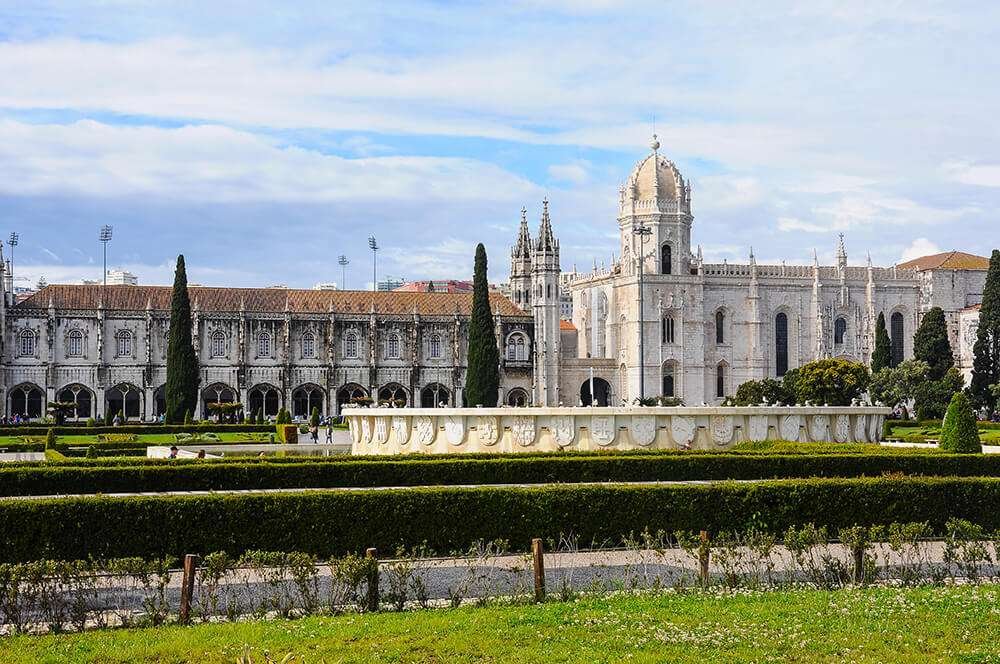The Jerónimos Monastery in the riverfront district of Belém is without a doubt one of Portugal’s most famed and magnificent sites.
The richly decorated 16th century building is one of the "7 Wonders of the World of Portugal" and has been declared a "Cultural Heritage of Humanity" by UNESCO.
A visit to this masterpiece, which also serves as Vasco da Gama's final resting place, is an absolute must to take in the mind-blowing blend of art, architecture and history.
In this guide, you will learn everything you need to know before your visit, including the history, entrance and hours.
Let’s dive in!
Other Recommended Articles:
Ticket Options for the Jeronimos Monastery
With numerous websites offering tickets for the Jeronimos Monastery, it can be difficult to choose the right tickets. That's why we've taken the initiative to compare all the available options for you.
Below, you'll find a curated list of the most popular tickets for the Jeronimos Monastery, including the cheapest options. Simply click on your preferred choice to purchase your tickets.
Most Popular Tickets:
- Ticket Overview for Jerónimos Monastery
- Tickets for Jerónimos Monastery
- Combo Ticket: Jerónimos Monastery + Belém Tower + National Palace of Pena
- Classic Lisbon Combo: Sao Jorge Castle + Belém Tower + Jerónimos Monastery Tickets
- Combo Ticket: SL Benfica Stadium and Museum Tour + Mosteiro dos Jerónimos
- Combo Ticket: Jerónimos Monastery + Navy Planetarium
- Lisboa Card 50+ attractions + Public transport
Entrance, Tickets, and Tours to Jeronimos Monastery
- Entrance: The Jeronimos Monastery is open every day except Mondays. In summer (May to September), it is open from 10:00 to 18:30; in winter (October to April), from 10:00 to 17:30. Last entry is 30 minutes before closing. Closed on January 1, Easter Sunday, May 1 and December 25.
- Tickets: To avoid waiting in long ticket lines, we recommend buying online tickets with skip-the-line access, as the site is very popular. Children under the age of 13 years as well as holders of Lisbon Card enjoy free entrance. Please note that admission to the church is free.
- Tours: You can buy a 90-minute skip-the-line guided tour with an English-speaking guide, here.
- Travelers' Tips: Please note that the church and the monastery have separate entrances. There is a line to enter the Jeronimos Monastery (for visitors who have bought their tickets), a line to enter the church (next to it), and a line to buy tickets for the monastery (at the Museu Nacional de Arqueologia, 190 meters to the west). Since the signs are late in telling you what the line is for, you should check before you get in line, so you don't waste time.
Things to do at the Jeronimos Monastery
The Jerónimos Monastery is a Manueline gem and one of the most visited attractions in Lisbon.
A visit to the monastery that was home to the monks of the Order of St. Jerome (Hieronymites) will allow you to discover the wonders and mysteries of this masterpiece and reflect on its tribute to Portuguese identity and culture.
Here are the must-sees during your visit to the Jerónimos Monastery:

1. Manueline Style Architecture
The Jerónimos Monastery, an incredible symbol of Portugal's wealth and success during the golden Age of Discoveries, is sure to wow every visitor with its impressive architecture. Designed by architect Diogo de Boitaca, it is one of the finest examples of Portuguese Late Gothic Manueline style and features Renaissance influences.
Gaze at the imposing façade and the stunning architecture that surrounds you. You will quickly see that it is strongly influenced by a maritime theme. Take a closer looks and you will notice nautical and religious elements, royal symbols and discoveries made during the voyages of explorers as the Portuguese empire expanded. You can see ropes, compasses and other instruments in the limestone carvings.

2. Inside: Cloister
You can easily spend an entire afternoon touring the interior of the Jerónimos Monastery, which has a huge square cloister measuring 180.4 by 180.4 meters. Wandering through the magnificent two-story cloister, marvel at the richly decorated and intricate details and understand why the monastery took nearly 100 years to build.
Admire the array of Manueline ornaments and pay attention to the double arches, pointed spirals and psychedelic ceilings. Look for the corner columns engraved with sea monsters, coral, rope reels and other marine motifs.
Take as many photos as you can, because the spectacular backdrop ensures postcard-worthy pictures.
3. Inside: The Adjoining Rooms
Take a peek into the smaller adjoining rooms and explore the former library as well as the room that is dedicated to the history of the monastery. A beautiful doorway with an elaborate stone carving leads to the Chapter House that shelters the tomb of the historian Alexandre Herculano.
Visit the former monks’ refectory, which was used for dining and education, and features beautiful 18th century azulejos tiles depicting the Biblical story of Joseph.
The west wing, which was formerly used as the dormitory, houses the National Archaeological Museum (Museu Nacional de Arqueologia) and the Maritime Museum (Museu da Marinha).
From the grounds, you enjoy fantastic views over the Tagus River.

4. Visit Santa Maria Church & Tombs
Be sure to visit the Santa Maria Church (Igreja de Santa Maria de Belém), a unique single nave church with richly decorated portals. During the time of the Discoveries, it was the site where sailors and explorers made their last confession before departing into the unknown.
The interior of the church impresses with huge, artfully sculpted columns and magnificent altars.
However, the main attraction are the tombstones dedicated to the greatest explorers, kings, poets, and important politicians in Portugal. You will find Vasco da Gama's tombstone to the left of the entrance. It is decorated with his coat of arms, a caravel with six sails and ship's rope ornaments. To the right of the entrance, is the tomb of Luís de Camões, a 15th century poet and chronicler of many voyages of discovery. The royal tombs are to be found in the main chapel, resting on marble elephants.
- Please note: To enter the church, you need to use a different, designated entrance. The entrance to the church is free of charge.

5. Take a Break in the lovely Park
Right in front of the Jeronimos Monastery there is a beautiful public space, the Praça do Império square, created for the 1940 Great World Exhibition of Portugal.
Pay attention to the hedges trimmed in the shape of various coats of arms that stand for the different municipal districts of Portugal. In the middle of the square, there is a large fountain, on which you can also see coats of arms.
Stroll through the beautifully landscaped garden area or take a seat on one of the many benches, listen to the sound of the fountain and enjoy a moment of peace.

6. Try a Pastel de Belém
Did you know that the famous Portuguese dessert, Pasteis de Nata, was invented in the Jerónimos Monastery?
In the Middle Ages, in the monasteries and convents, egg whites were used to starch clothes, which meant that egg yolks were abundant. So the monks of the Jeronimos monastery came up with the idea of adding them to baked goods, and thus the Pastel de Nata was born.
When the state ordered the dissolution of all religious groups, the secret recipe was passed on to Casa Pastéis de Belém. Here you can still enjoy Pasteis de Nata, or Pasteis de Belém, as they are called here, made according to the original recipe.
We highly recommend going to the famous pastry shop, just a three-minute walk away, and enjoying the delicious custard tart.
- The pastel de nata is one of Portugals most's prized dishes. Find out the rest of the best dishes to eat when in Lisbon in this tasty article.
7. Other Attractions Nearby
The Belém neighborhood is one of the most historic areas of Lisbon and therefore brimming with centuries-old architecture, famous museums and points of interest.
These include the iconic Belém Tower, declared a World Heritage Site by UNESCO, the Belém Cultural Center, the Tropical Botanical Garden and the Museum of Art and Architecture.
Also worth mentioning is the Monument to the Discoveries, which honors Portuguese navigators and explorers. It depicts 33 important figures of the Portuguese late Middle Ages, including explorers, kings and artists. For a small fee, you can even go inside the building, which houses an auditorium and an exhibition hall, and climb up to the viewing platform.
- Belém is known for being a cultural district and many of the best museums in Lisbon are located here as well as activities and things to do with kids. Discover everything there is to see when you visit!

How to Get to the Jeronimos Monastery?
From Praça do Comércio: Take Tram 15E and go 15 stations until “Mosteiro Jerónimos”. The tram stops right in front of the Monastery of Jerónimos.
FAQ about the Jeronimos Monastery
The Jerónimos Monastery is located in the riverfront district Belem. The address is: Praça do Império, 1400-206, Lisbon
The Jeronimos Monastery became the burial place of some of the greatest explorers, kings and poets in Portugal. Inside the church, you can find the tombs of the great explorer Vasco da Gama, the 15th century poet Luís de Camões, and the royal tombs of King Manuel I and his wife Maria of Aragon as well as King João III and his wife Queen Catherine of Austria.
Admission to the church of the Jeronimos Monastery is free. However, to visit the cloister and other parts of the monastery, an entrance fee must be paid. Children under the age of 13 years as well as holders of Lisbon Card enjoy free entrance to the monastery.
History of Jeronimos Monastery
The Jerónimos Monastery, also called Hieronymite Monastery, was commissioned by King Manuel I as a tribute to Vasco da Gama and his successful voyage to India. The site was built on the location of the chapel Ermida do Restelo, where Vasco da Gama and his crew stayed on their last night in Portugal and prayed before setting sail to the Far East. Construction of the monastery and the church began in 1501 or 1502 and lasted for several decades.
The monastery was given to the Order of San Jerónimo, which is why it was called the Jerónimos Monastery. The task of the monks was to pray for the king as well as for the safety and success of the sailors who set out on voyages to distant lands.
When the order was dissolved in 1833, the monastery served as a school and orphanage until 1940. It was declared a National Monument in 1907 and a UNESCO World Heritage Site in 1983.
Contact & Map
- Address: Mosteiro dos Jerónimos, Praça do Império, 1400-206, Lisbon
- Opening Hours: Every day except Mondays. In summer: 10:00 to 18:30; in winter: 10:00 to 17:30
- Public Transport: Tram 15E, station: “Mosteiro Jerónimos”
- Official Website: JeronimosMonastery.pt

